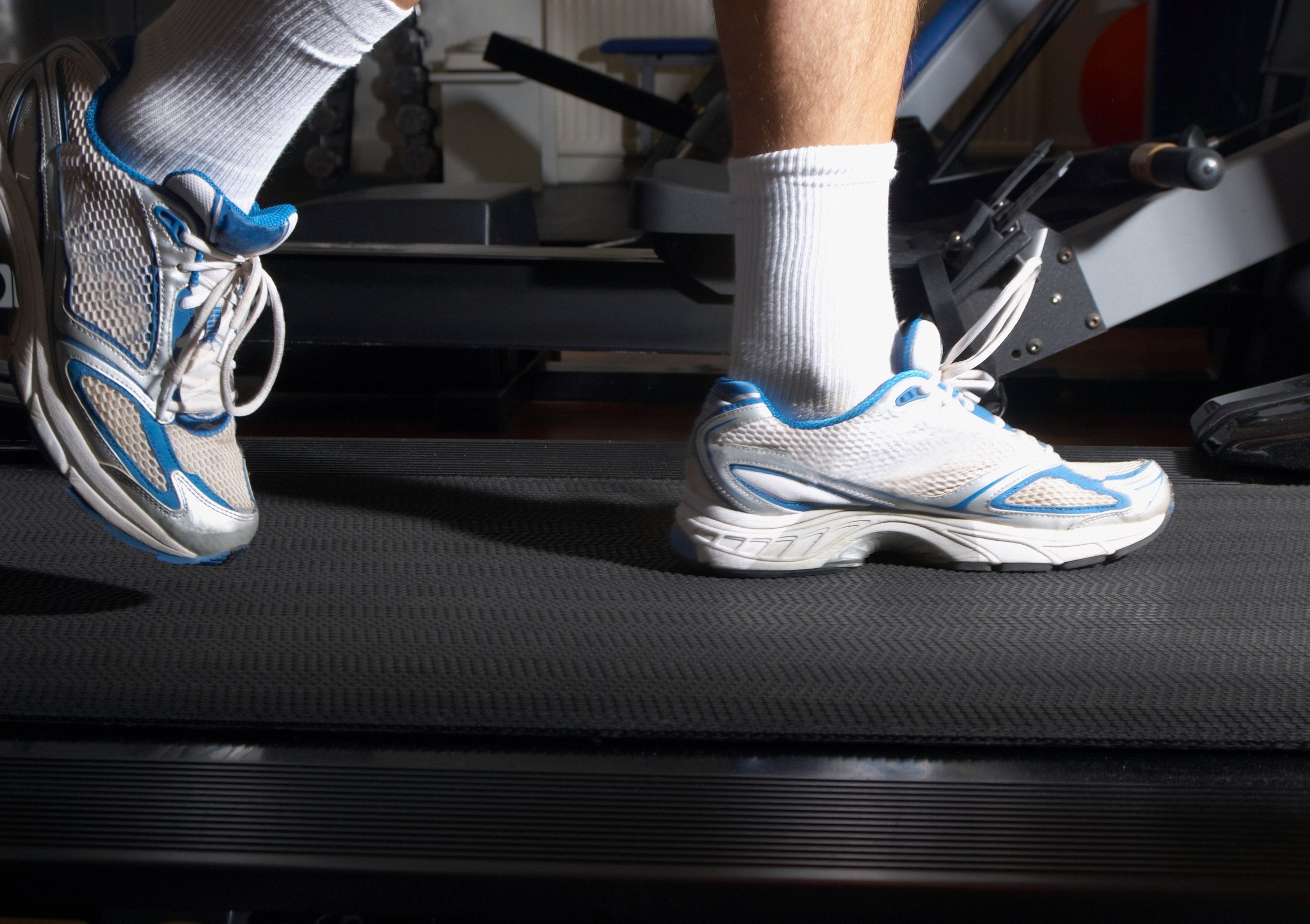
At the annual Alzheimer’s Association International Conference in July 2015, scientists report some encouraging news about the benefits of exercise. In the first studies to look at physical activity among people already diagnosed with the early stages of Alzheimer’s, moderate to high intensity workouts may not only slow down the biological symptoms of Alzheimer’s—but may lead to improvements in cognitive functions as well.
In one study involving 200 people with mild or moderate disease, Dr. Steen Hasselbalch from the University of Copenhagen and his colleagues randomly assigned some participants to an hour of exercise three times a week for 16 weeks, while allowing the remainder to continue without a regular activity regimen. After a phase-in period, the exercisers were working at a moderate to intense level, achieving 70% to 80% of their maximum heart rate for at least half of each session.
MORE: Your School Grades Affect Your Risk of Dementia
That level of intensity is important, says Hasselbalch, to achieve results. Compared to the control group, the exercisers showed fewer symptoms such as anxiety, changes in mood and depression that are common among Alzheimer’s patients. Overall, those who were more active did not show any changes in cognitive functions, but when Hasselbalch looked at the results more carefully, he found that participants with milder disease who exercised actually did perform better on intellectual skills after the 16 weeks. They were tested on memory, language, mental speed and other executive functions.
“It’s been shown with other diseases that exercise can have beneficial effects,” he says. “Now we have shown it’s also important for dementia. So if you now have this alternative treatment, it sends a message that you can do something even after diagnosis to treat dementia.”
MORE: Two New Alzheimer’s Drugs Offer Hope—With Caveats
Because the people exercised in a group setting, he says that simply being part of that social situation and getting out of the house and interacting with others appears to reduce the mood-related symptoms of Alzheimer’s. “But if you really want an effect on cognition, then you have to exercise hard.”
He admits that his study did not delve into how the exercise might be contributing to the improved cognitive changes, but he will be analyzing the blood and cerebral spinal fluid collected from the participants to study that further.
MORE: Alzheimer’s May Show Up in Saliva
Such changes are what Laura Baker, from Wake Forest School of Medicine, and her team did with another group of early stage Alzheimer’s patients. They wanted to see what biological changes exercise might have on the Alzheimer’s process, and focused on 70 patients with mild cognitive impairment and diabetes, both of which significantly increase the risk for Alzheimer’s. Some were randomly assigned to simple stretching exercises, while others were told to exercise four times a week and, like those in Hasselbalch’s study, had to work hard enough to raise their heart rate to 70% to 80% of its maximum for 30 of the 45 minutes of each session. Baker then studied their cognitive function tests, brain imaging and levels of Alzheimer’s proteins in their cerebral spinal fluid.
She found that those who exercise rigorously increased the blood flow in the areas of the brain responsible for memory and higher level processing. The result was a dramatically increased score, by 80%, on average on the cognitive tests than those who just stretched, even after accounting for age-related changes in thinking. More intriguing, the exercisers also showed on average a 14% lower level of the protein tau, which is a good indicator that brain neurons are dying and Alzheimer’s processes are well underway, at the end of the study compared to before they began the exercise regimen.
“What’s encouraging to us is that we don’t have treatments now; there’s nothing for Alzheimer’s patients,” says Baker. “The possibility that a non-medicine intervention could actually change the disease — we’re just very encouraged by these results,.”
While the exercise regimen wasn’t an easy one — it qualifies as moderately intense physical activity, which for a group of older adults who are likely sedentary to begin with is certainly a challenge, both Hasselbalch and Baker say that with the right execution — by working with participants and by gradually increasing their exercise level — achieving the amounts of activity needed to help their brains is possible. Baker also points out that it’s time to start studying the combined effects of new medications that are being tested for Alzheimer’s and increased physical activity. Together, she says, they may hold the key to actually slowing down and possibly even reversing progression of the disease.
More Must-Reads from TIME
- Cybersecurity Experts Are Sounding the Alarm on DOGE
- Meet the 2025 Women of the Year
- The Harsh Truth About Disability Inclusion
- Why Do More Young Adults Have Cancer?
- Colman Domingo Leads With Radical Love
- How to Get Better at Doing Things Alone
- Michelle Zauner Stares Down the Darkness
Contact us at letters@time.com